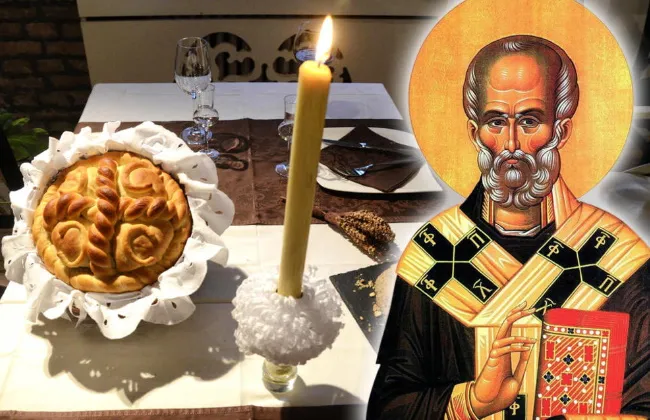Contenus
ToggleIn short
In Serbia, when the harvests have come in and the vines have been harvested, and autumn and winter are here, the time for slava comes. This religious festival which pays homage to the patron saint of the family is essentially a convivial celebration.

Slava, the feast of the patron saint of the family
The opinion prevails today that it is a survival of paganism Slavic quand chaque famille avait sa divinité protectrice. Comme beaucoup d’autres coutumes, elle a été intégrée et réinterprétée par l’église orthodoxe serbe qui a revisité son folklore et ses origines. Elle a été codifiée au XIIIe siècle par Saint Sava, le fondateur de l’église orthodoxe autocéphale serbe.
Nearly half of Serbian families celebrate Saint Nicholas on December 19, the most celebrated being the two Saint George (Djurdjevdan on May 6 and Djurdjic on November 16), followed by the feast of the Archangel St Michael (November 21), those of Saint John (January 20), Saint Dimitri on November 8, and Saint Parascheva on October 27.
To celebrate slava, three ingredients are absolutely necessary: an icon of the patron saint of the family, a slava cake (slavski kolac) decorated with a cross and zito (wheat ground and mixed with sugar and chopped nuts), to which must be added wine and a candle. The most religious bring the priest who blesses the cake (symbol of the body of Christ) and pours a little wine on it (symbol of the blood of Christ). This is when we break the cake as a sign of cohesion. Other families bring the cake
La fête dure plus d’un jour. Il faut préparer le gâteau, une sorte de brioche ronde, le zito, et le repas de fête qui sera avec viande ou sans selon que la date de la fête tombe ou non en période de carême. Les plats traditionnels – la gibanica (feuilleté au fromage), l’ajvar (poivrons et piments pilés), le kajmak (crème du lait battue), et la sarma (feuilles de chou farcies avec ou sans viande) – sont servis aux convives qui défilent toute la journée. Etant donné que beaucoup de slave ont lieu le même jour, il est rare que les convives restent plus d’une heure dans chaque famille.
It was included in 2014 by UNESCO on the representative list of the intangible heritage of humanity.
Social networks
Today, Serbs celebrate slava. This celebration of the patron saints of the family dates back to the mythological times of Serbia. Zito, Slavski Kolac and other traditional dishes are honored during the family meal. #mythology #myth #legend #calendar #December 19 #Serbia #slava #zito
Picture
